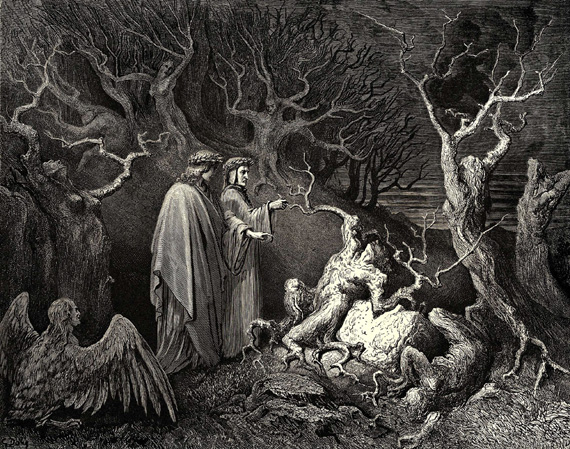How does the geography of the wood of suicides contribute to the meaning and significance of suicide?
Dante uses quite severe imagery when dealing with the setting of the seventh circle of hell in Cantos XIII through XV. In Canto XIII, Dante introduces the unfortunate setting of this circle. He begins describing a dark and twisted wood:
"Not yet had Nessus reached the other side,
When we had put ourselves within a wood,
That was not marked by any path whatever.
Not foliage green, but of a dusky colour,
Not branches smooth, but gnarled and intertangled,
Not apple-trees were there, but thorns with poison."
(lines 13.1-6)
Here, Dante makes yet another epic simile, describing not only the ecology of the circle through which he passes, but also using that same description to comment on the nature of that sin. The scene is a potentially beautiful and graceful wood, but instead, Dante and Virgil tread through a "twisted" and distorted forest. There are fruit trees, but there are no fruits that it produces.
Similarly, the sin of committing suicide cuts short one's own life, and makes them "barren" to do anything else. The same simile is used across to Canto XV in description of the Sodomites. In both cases, the wood which was once beautiful is now corrupt due to the sinners choices.
Also, those who committed suicide may have sought out honour and glory in their actions. In contrapasso, perhaps the superiority they sought is now the inverse. The suicide-spirits exist only as commonly as trees in a forest, not one set apart from another.

No comments:
Post a Comment